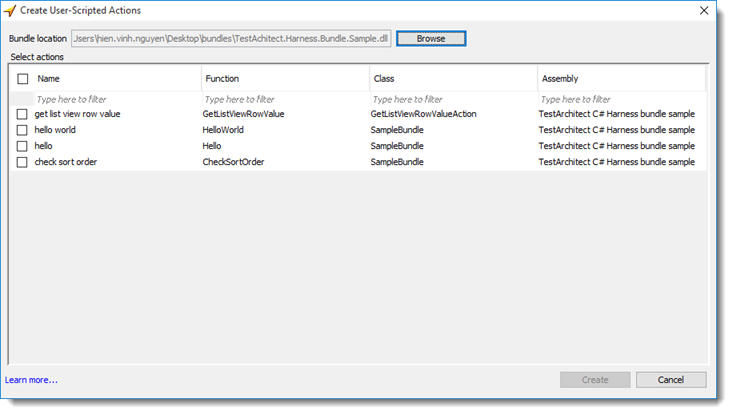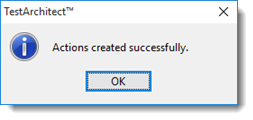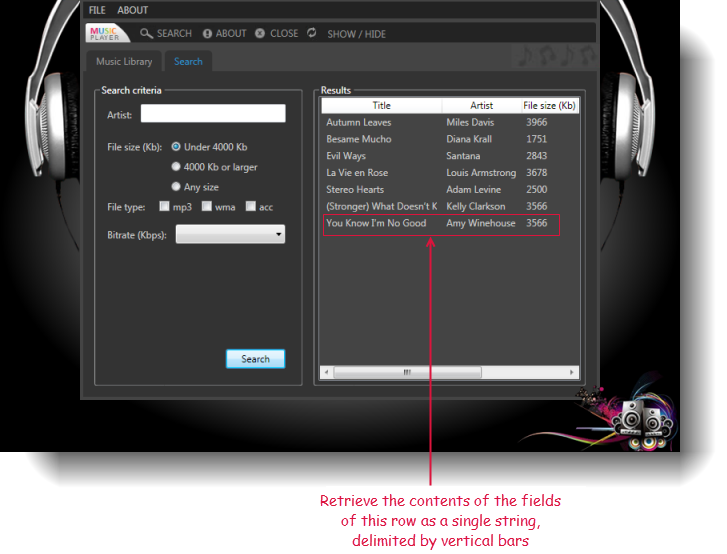Creating the GUI-interfacing test case for the user-scripted C# bundle harness action
Create a TestArchitect test case to invoke the custom scripted C# action that handles the GUI-interfacing action.
To invoke the get list view row value in TestArchitect:
Begin by opening TestArchitect Client, then expand a specific project of the TestArchitect explorer tree.
In the TestArchitect explorer tree, right-click the Action node, and then select Create User-Scripted Actions.
The Create User-Scripted Actions dialog box appears.
In the dialog box, click Browse to locate the generated TestAchitect.Harness.Bundle.Sample.dll library.
The DLL is loaded with all defined C# user-scripted actions.

Select the get list row value checkbox.

Click Create.
If the creation is successful, a dialog box appears.

Click OK to dismiss the dialog box.
Close the Create User-Scripted Actions dialog box.
In the TestArchitect explorer tree, under the Actions node, a new stub action of get list row value and its arguments are created successfully.

Assuming you performed the last exercise, you should have a test module named My scripted tests. If not, go ahead andcreate it.
- Add a new test case to test module My scripted tests. Title this new test case
Test user-scripted action interacting with aut. Optionally, add a test objective action beneath it, referencing objective TO 01, since we’re still testing the C# bundle harness.
You will be testing the songs list control of the Music Player application. You will select an item based on a given row index number, get the combined values of the selected item (separated by vertical bars as delimiters), and assign the retrieved value to a specified returned variable.
Add the following action line for the get list view row value action. Its job is to retrieve the contents row #7 of the songs list control in the Search tab, and assign that string to the specified returned variable (song details), with the contents of the fields of the row separated by vertical bar ( | ) delimiters.

Save your work.
You now have the test case needed to invoke your C#-coded function for the action get list view row value.
Next, you will run the test module and verify that it invokes your C#-coded function, and that the function works properly.
